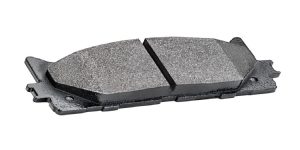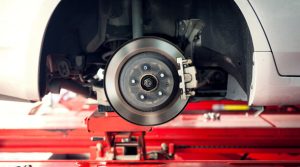Choosing the right brake pads is more than just selecting a part that fits your vehicle; it’s about understanding how the materials used impact performance, noise, dust production, and longevity. Brake pads come in different materials — ceramic, semi-metallic, and organic — each with unique characteristics that influence how they behave on the road.
In this article, we’ll explore how brake pad materials affect noise levels, dust generation, and wear on both the pads and your brake rotors. This knowledge will help you make informed decisions when replacing your brake pads for a safer, cleaner, and quieter driving experience.
Brake Pad Materials Overview

Before diving into noise, dust, and wear, let’s briefly review the common brake pad materials:
| Material Type | Composition | Common Use |
|---|---|---|
| Ceramic | Ceramic fibers, bonding agents, small metals | Daily driving, comfort cars |
| Semi-Metallic | 30-65% metal fibers (steel, copper), fillers | Performance, trucks, SUVs |
| Organic (NAO) | Natural fibers, resins, rubber compounds | Budget vehicles, light driving |
1. Noise: Why Brake Pads Squeal and How Material Matters
Brake noise is a common complaint among drivers. The material composition directly affects how noisy your brakes will be.
Noise Characteristics by Material
| Material | Noise Level | Why It Happens |
|---|---|---|
| Ceramic | Very quiet | Dense ceramic compounds absorb vibrations well |
| Semi-Metallic | Noisy to moderate noise | Metal content can create vibrations and squeal |
| Organic | Quiet to moderate noise | Softer compounds reduce noise but can degrade over time |
Why Do Brakes Squeal?
-
Vibration: When the brake pad vibrates against the rotor at certain frequencies, it creates a high-pitched squeal.
-
Hardness: Harder pads (like semi-metallic) tend to vibrate more.
-
Lack of Lubrication: Missing or dried anti-squeal shims and grease.
-
Wear: Worn pads or rotors can exacerbate noise.
2. Dust: How Brake Pad Materials Impact Wheel Cleanliness
Brake dust is not just unsightly; it can also affect wheel finish and may indicate excessive pad wear.
Dust Production by Material
| Material | Dust Amount | Dust Type | Effect on Wheels |
|---|---|---|---|
| Ceramic | Low | Fine, light-colored dust | Easier to clean, less staining |
| Semi-Metallic | High | Dark, abrasive dust | Sticks to wheels, harder to clean |
| Organic | Moderate | Medium dust, softer | Less staining, but more than ceramic |
Brake dust originates from the pad’s friction material wearing off during braking. Semi-metallic pads, containing metal fibers, produce more dust that’s darker and abrasive, potentially harming wheel finishes faster.
3. Wear: Longevity and Impact on Rotors
Brake pads wear down over time, but how fast they wear and their impact on the rotor depends heavily on material choice.
Wear Rates and Rotor Impact
| Material | Pad Wear Rate | Rotor Wear | Notes |
|---|---|---|---|
| Ceramic | Low | Low | Pads last longer, gentle on rotors |
| Semi-Metallic | Moderate to high | High | Pads wear reasonably but cause rotor wear |
| Organic | High | Low | Pads wear quickly but preserve rotors |
Semi-metallic pads are abrasive due to metal fibers, accelerating rotor wear. Organic pads wear faster but are softer on rotors. Ceramic pads provide a good balance with long pad life and minimal rotor damage.
Detailed Breakdown of Brake Pad Materials
Ceramic Brake Pads
-
Noise: Quietest option due to dense material that dampens vibration.
-
Dust: Produces the least dust, which is lighter and doesn’t stick to wheels.
-
Wear: Long-lasting pads that wear rotors minimally.
-
Best for: Daily drivers, commuters, anyone wanting quiet, clean brakes.
Semi-Metallic Brake Pads
-
Noise: Can be noisy, especially when cold or during initial use.
-
Dust: Produces the most dust, which can be dark and abrasive.
-
Wear: Pads last moderately well, but rotor wear is significant.
-
Best for: Performance vehicles, trucks, heavy-duty use, towing.
Organic Brake Pads
-
Noise: Generally quiet initially but may degrade over time causing noise.
-
Dust: Moderate dust, softer and less damaging than semi-metallic dust.
-
Wear: Pads wear quickly but are gentle on rotors.
-
Best for: Economy vehicles, light drivers, budget-conscious buyers.
Summary Table: Noise, Dust, and Wear by Brake Pad Material
| Material | Noise Level | Dust Amount | Rotor Wear Impact | Typical Lifespan (km) | Cost |
|---|---|---|---|---|---|
| Ceramic | Very Low | Low | Low | 40,000 – 70,000 | High |
| Semi-Metallic | Moderate to High | High | High | 30,000 – 50,000 | Moderate |
| Organic | Low to Moderate | Moderate | Low | 20,000 – 40,000 | Low |
Tips to Minimize Brake Noise and Dust Regardless of Pad Type
-
Proper Installation: Use anti-squeal shims and lubricate pad backing plates.
-
Brake Bedding: Follow manufacturer’s bedding procedure to properly seat pads.
-
Regular Inspection: Replace worn or damaged components promptly.
-
Rotor Maintenance: Resurface or replace rotors when uneven or scored.
When Should You Replace Brake Pads?

Signs that your brake pads need replacement include:
-
Squealing or grinding noises.
-
Reduced braking performance.
-
Visual inspection showing less than 3 mm pad thickness.
-
Vibrations when braking.
Where to Find Quality Brake Pads
If you’re ready to upgrade or replace your brake pads, choose quality parts that suit your driving style and vehicle. Visit trusted suppliers for a wide range of options tailored to your needs.
Buy Car Brake Pads online — find ceramic, semi-metallic, and organic brake pads with fast delivery and trusted brands.
Final Thoughts
Brake pad material choice affects noise, dust, and wear significantly. Ceramic pads offer quiet operation and low dust but at a higher cost. Semi-metallic pads excel in performance but produce noise and dust and wear rotors faster. Organic pads provide a budget-friendly option with quieter braking but shorter lifespan.
Understanding these trade-offs helps you pick the ideal brake pads, ensuring your vehicle stops safely, cleanly, and quietly for thousands of kilometers.